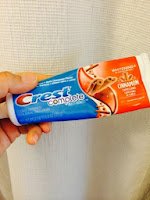During to a conversation with Erin Wendel from the American Physical Therapy Association (a Fitbloggin' sponsor), I was offered an opportunity to do an interview with Robert Gillanders, who works with runners and triathletes in his physical therapy practice and is also a speaker, writer, and does other media work. This interview was a great opportunity, and I received no other compensation for the post.
Preventing Injury

Robert works in the DC area where people "tend to work very hard and train very hard," so he works with a lot of triathletes and runners.
He says that the causes of triathlon-related injuries are not that much different than the causes of injuries in other sports. "Oftentimes their bodies are ill-prepared to take the training stress that they throw at it."
"The textbook, most common cause would be more related to training errors than anything. They have a long, hard winter, people are not consistently exercising, we start getting some warmer days, and people get a little overzealous with ramping up their training. The body has difficulty with adapting to that new stress."
Triathletes can reduce the chances for injury by training correctly. He wants athletes to build a solid endurance base before they start adding intensity. "People start feeling good after a couple weeks of training and then they start pushing it with hills or sprints."
Unless they are "doing something absurd," training errors can take some time to manifest as injury, so when an athlete presents with a new injury, he asks them to go back several weeks and months and look at what has changed, "More frequency, more intensity, outside vs. inside, using different equipment, all these variables are things that weigh in."
A big challenge for triathletes is a simple problem of time management. "They're expending so much time and energy with doing all three sports that they don't have time for anything else. What we see in the clinic, oftentimes its some of the strength imbalances or the flexibility imbalances that make a person vulnerable to injury."
There is also a danger in going right from work to a workout. "A lot of these people are sitting at a desk all day and then they're going out and training, sometimes before work and after work. If they're not putting any time into stretching out their legs or stretching out their back, the repercussions of sitting all day tend to catch up when you ask those muscles that have been in a shortened position all day to perform."
The stabilizing muscles needed for injury-free training are not strengthened enough by triathlon training itself. Most of the motions in running, biking, and swimming are movements in one plane, but the muscles that support that movement also need to be stable in other planes.
Flexibility is also an issue. Running, for example, requires flexibility in the hip and ankle. "If those areas are not flexible enough, then they start compensating. It's often a low-level stress, but running is such a high-repetition, high-load sport, that some type of micro instability or micro deficit adds up."
Physical therapy exercises can be a hard sell, because triathlon training is already such a juggling act. "You should see the looks I get when I ask somebody, 'besides running, biking, and swimming, what else do you do?' The look I get is one of disbelief."
"The body needs more input from a flexibility standpoint and from a strength standpoint." He has worked with many triathletes so he knows that this is a hard sell. Most triathletes just manage injuries as they occur rather than working to prevent them. (Author's note: Guilty as charged). "It doesn't take much to have a focused routine to prevent the injury in the first place. A lot of the outreach we do is just educating the athletes."
He says that experienced triathletes can be the most resistant. "They have had some measure of success in their sport and they want to keep going. Getting them to change behavior is not easy." He said that newer triathletes will "look at you with starry eyes and drink the Kool-Aid. Anything you tell them to do they're willing to do."
Robert suggests that especially in the off-season, over the winter, triathletes should train to develop the strength and mobility needed for their sport. "If you're more flexible and you have more stability and strength, you're going to be able to tolerate more training load, and that's where we see the performance gains."
He points to professional athletes -- golfers, baseball players, and football players, and other athletes don't just do their own sport, they work on strength and endurance. Triathletes need to do the same.
Robert says that when he begins working with an athlete, he performs functional tests that mimic the sport. For example, for runners, he will test them in single-leg standing, squatting, and jumping -- motions that simulate the most challenging part of the movement. He also looks for "common patterns of deviation" that lead to potential problems. For example, "if the glutes are not strong, the hamstrings will try to help out... if the hip is not flexible, the whole leg can't get behind the triathlete so they will try to reach with the ankle."
Other common areas of complaint in triathletes are the neck (from poor position on the bike), rotator cuff (from swimming), knees (biking and running), Achilles tendon, hamstring, plantar fascia. He says that longer-distance triathletes can also sometimes experience lower-back pain from core/glute imbalances.
"The body is always going to go to the path of least resistance. If you are stiff in a certain joint, the body is not going to go to that restriction, it's going to go around it." This creates unnatural movements that the muscles or joints cannot handle. "It's easy to see how there's going to be mechanical stress as a result of that."
Robert says his job is to take an athlete's weaknesses and make them strengths. He teaches them to change patterns of movement to make them more efficient and safer. He develops an individual roadmap for the athlete. People who just use more generalized advice will often not train the areas they really need to train.
I have been trying to use yoga as my strength/flexibility training, so I asked Robert what he thought of yoga. He likes it as an adjunct to physical therapy, but not as a substitute for it. "Get there ten minutes early and go through a routine of exercises where you're isolating certain muscle groups." He'll also suggest certain yoga poses where they can be mindful of their individual challenges.
It's Gotta Be the Shoes
I couldn't resist asking him to chime in on the whole shoe debate. He says for most runners, a "Goldilocks shoe" is best. Motion-control shoes tend to be "too much of a good thing." Too-structured shoes interfere with normal motion. "If we stop pronation altogether, people are exposed to a higher risk of injury."
He doesn't necessarily recommend minimalist shoes, though. "If I have somebody considering a minimalist shoe, do they have the flexibility and mobility to accommodate that? A lot of times I see people rushing into these things."
For some runners, switching to a lighter-weight shoe may be appropriate when they are trying to improve race times or lighten the load during training, but it should be done with care, just like when they are making any other change to their training.
He sees the pendulum swinging in the opposite direction again now, with "super-plush shoes." Runners see a problem and immediately want to swap out their shoes rather than changing how they move. "If can teach them how to run correctly to the point where the equipment isn't really an issue."
Heel-striking or forefoot running isn't really the important point. The foot needs to land closer to the body's center of mass, which minimizes the impact because the leg can absorb some of the shock of running. He asks runners to "Run softly, run tall, land with your feet underneath you."
Takeaways
- Train smart. It's easier to prevent injuries than to fix them.
- Develop good habits when you're just starting a sport, including strength and flexibility work.
- Training in the three sports is not enough!
- Be smart about how quickly you ramp up things to let the body get used to training.
- Recognize the need to think about common injuries, muscle imbalances, and joint flexibility.
- It can be easy to fix injuries but it's easier to prevent them in the first place.
- 10-15 minutes of exercises may be all it takes to stay injury-free and improve performance.
- Warm up and cool down and use that time to do stretching and strengthening drills.
- Consult a physical therapist who can help you safely and effectively achieve your training goals. Find one in your area.
Resources
The following resources are from the
APTA's "Move Forward" campaign:
Running resources
Healthy cycling
Avoiding overtraining
Soreness vs. Pain
How to recover from a workout
I know that I am feeling more motivated to work on injury-prevention and strengthening work after doing this interview. I might even pull out those exercises I was supposed to be doing for my hamstring injury... I'll add any other good articles or resources I find to my .
Robert Gillanders's bio from the APTA website:
Robert Gillanders, PT, DPT, OCS, practices at Sports + Spinal Physical Therapy in Washington, DC. He is a board-certified orthopedic clinical specialist, a certified ergonomic assessment specialist, an active release treatment techniques therapist, and is certified in Intramuscular Manual Therapy (also known as "trigger pointneedling"). Gillanders is also a certified bike-fit specialist and running medicine expert. He integrates clinical skills with personal experience to provide athletes with sports-specific services that help them expedite their recovery and improve their race-day performance. Gillanders received his master’s of physical therapy from the University of Saint Augustine and his doctor of physical therapy degree from Marymount University. He is a frequent guest speaker at medical conferences and athletic events, a contributor to Runner's World magazine, and a consultant for local running and triathlon teams. Gillanders enjoys staying active by running and cycling. He has competed in numerous endurance cycling, running, and triathlon events, including the Boston Marathon 5 times.











































